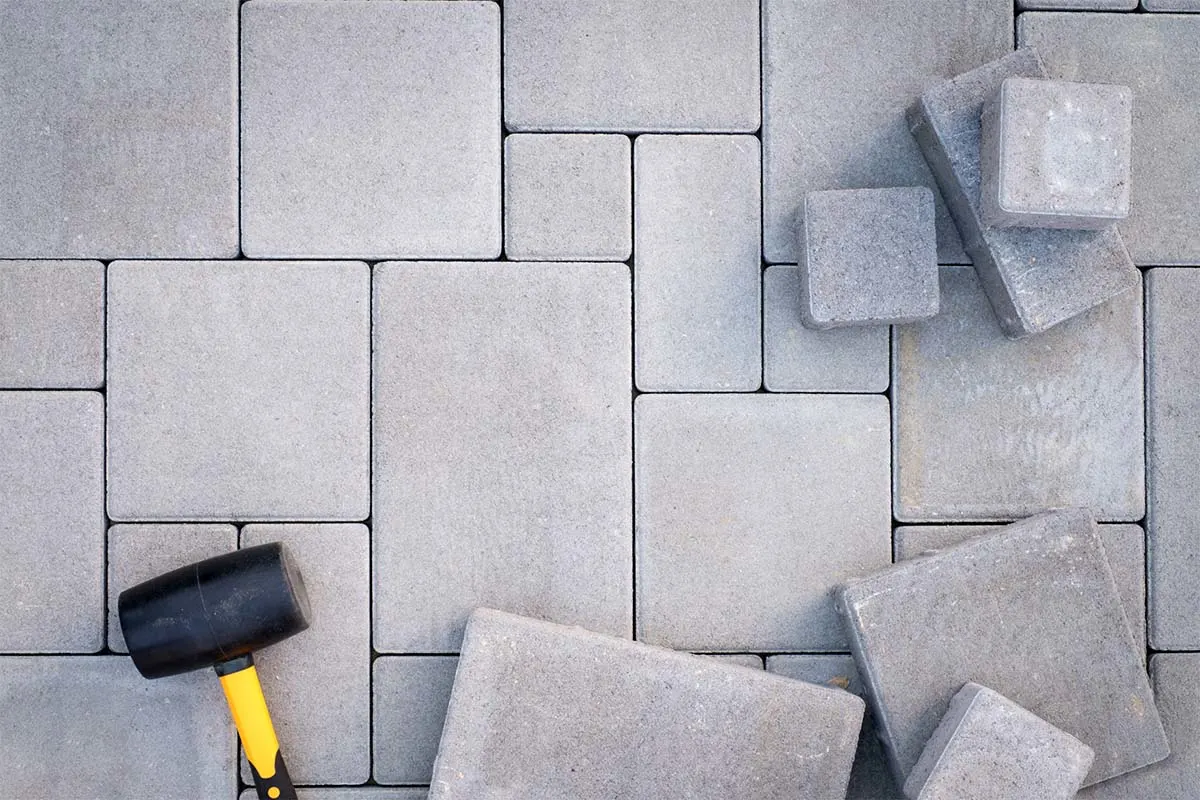Paving Advice
Repeating & Random Paving Patterns

Repeating and random paving patterns are hugely popular for anyone who's looking to add an extra level of interest to their garden.
The laying patterns below are a great guide for our mixed-size Patio Kits and can be adjusted to suit each project. You can also find the correct guide for each product directly on the product page.
Where To Use Different Types of Paving Patterns
Designing your patio involves more than choosing the perfect paving slabs; the pattern you lay in can completely transform your outdoor space's look, feel, and functionality. From increasing visual appeal to improving durability and flow, the correct pattern makes all the difference.
When choosing your paver pattern, consider the style you want and how you will use the space. Will it be a high-traffic area? A quiet seating zone? A place for entertaining? Blending textures and colours and combining different patterns can also help define zones within your garden and create a cohesive, thoughtful layout.
Here's a closer look at some popular paving patterns and where they work best:
Modern & Eye-Catching:
Random & Repeating Pattern
This follows a set combination of paver sizes in a consistent, repeating sequence across the surface. Using a pre-set pattern, you can achieve a balanced and attractive look while enjoying the variation of multiple stone sizes. It's an efficient way to lay mixed-size paving and is often quicker to install than random layouts.
✅ Best for: Entertaining areas, courtyards, and patio zones.
Running Bond Pattern
This is one of the most straightforward and adaptable patterns, often seen in brick walls. Pavers are laid end-to-end in offset rows, creating a staggered, linear look. The simplicity of this pattern makes it ideal for modern garden designs, while the offset layout helps visually elongate tight or narrow spaces.
✅ Best for: Patios, walkways, pool surrounds, straight or curved garden paths
Stack Bond Pattern
The stack bond pattern features pavers laid in neat, aligned rows for a grid-like effect. It’s simple, modern, and visually calming, an excellent fit for minimalist garden designs. This pattern works exceptionally well in structured spaces or modern patios where clean lines and symmetry are key.
✅ Best for: Connecting, furniture zones, poolside areas
Classic & Versatile:
Herringbone Pattern
The herringbone pattern features a V-shaped interlocking layout inspired by classic European design. It adds dynamic visual interest and is incredibly durable. The interlocking structure distributes weight evenly, providing resistance to shifting, which is ideal for areas that need extra strength.
✅ Best for: Driveways, pathways, high-traffic areas
Circular Pattern
Circular patterns are an excellent choice for those who want to make a statement. Pavers are arranged in radiating circles or fan shapes to create a dramatic visual centrepiece. These layouts soften harsh lines and give your garden a more organic feel. Circular patterns are perfect for framing features like Heaters or outdoor Dining Sets and can easily be created using pre-cut paving kits.
✅ Best for: Open patios, courtyards, feature zones (like firepits or dining areas)
Soldier Course Pattern
The soldier course is a striking border pattern in which pavers stand on end in a straight line, usually running along the edge of another pattern. The name comes from how the pavers line up like soldiers standing at attention. It’s often used to frame patios or paths, giving them definition and a polished finish.
✅ Best for: Borders and edging.
Define Your Style & Space
The pattern you choose should suit the overall style of your home and garden. Consider the size and shape of your space, how people will move through it, and how the pattern will interact with other design elements. The correct paver pattern doesn't just look good, it works hard, too!
Tips For Success
As the size and shape of everyone's space will always vary, you will need to make some adaptions to your specific area and may need to cut slabs to fit your space. Adapting the design as you go is a crucial part of the process which will always get you the best results. This is also important when using more than one crate to avoid leaving a straight line down the middle of your patio where the two plans meet and repeat.




.webp)








